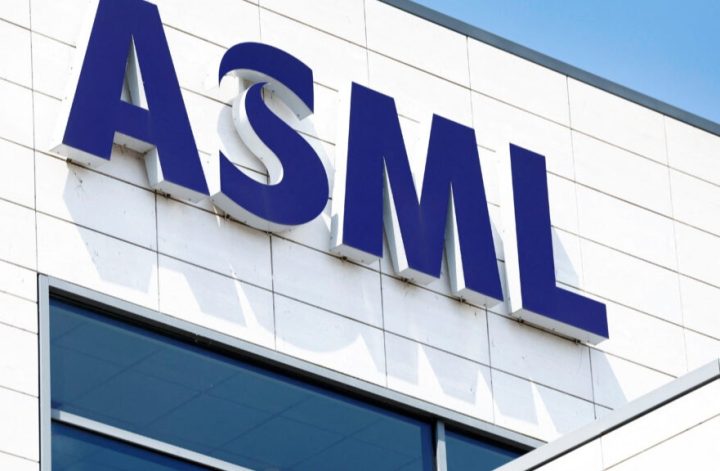I have been meaning to write about ASML since the beginning of the month,but the pre-earnings rally held me back. The post-earnings dip has only made my thesis stronger. One of the greatest technological innovators of our time, one that is powering the AI revolution, is available for cheap again.
ASML Holdings is one of the most important players in the global semiconductor ecosystem. It surprised many last week by signalling uncertainty around its 2026 growth outlook. The stock has given back most of the YTD gains as a result. I believe there is an opportunity to cash in on the pessimism around future growth.
Modern semiconductor chips are designed mainly using ASML’s Extreme Ultraviolet lithography machines. These machines provide the company with one of the strongest economic moats in the market today. There is no other company in the world that sells this technology, which means the Netherlands based firm has no competitor.
For any company to replicate EUV, it would take years of R&D and managing a supply chain that is extremely hard to execute. China is the only country which is desperate to come up with its own technology. But geopolitical issues mean even if it gets close, it will have a tough time dealing with the global cooperation required to bring together the technologies used in this machine or any similar technology.
We can therefore be sure that ASML is here to stay.
What’s causing the bearish sentiment?
ASML’s bookings peaked in 2022 as AI took the world by storm. Many companies overspent on their infrastructure and ASML benefitted. Since then, demand has normalized and is unlikely to go back to the 2022 levels anytime soon, which is understandable.
What is causing the downtrend right now, however, is the company’s earnings call where the management raised doubts of 2026 growth despite healthy demand.
On the other hand, as we said before, customers are facing increasing uncertainties based on macroeconomic and geopolitical developments. Further, some customers are navigating specific challenges that might affect the timing of their capital expenditure. Against this backdrop, while we are still paying for growth in 2026, we cannot confirm it at this stage. We will continue monitoring developments over the coming months..
Christophe D. Fouquet, CEO ASML
Barclays has previously said that it only expects 3 High NA EUV machines to be delivered in 2026 due to both Intel and Samsung delays. This growth pause in High NA, a product that is expected to drive the company’s growth till 2030, has brought the stock to reasonable valuations, which I will talk about next
Valuation
ASML’s fundamentals remain solid and the current premium over peers reflects the long-term dominance that investors expect from the company. It would be foolish to expect a discounted price with the S&P at all time highs. However, cyclical businesses often present buying opportunities in a down cycle and I believe the current valuation is in line with the historical average based on a number of metrics.
Book Value Expansion
We start with the company’s improving book value. In the recent past, ASML’s book value has increased in sync with the average stock price up until the 2020 COVID19 pandemic. The company’s book value tumbled to $23.91 per share in 2022. Since then, it has started going up again, in sync with the average stock price, as was the norm pre-covid.
The book value now stands at $53.12 according to the latest Q2 figures, more than doubling in 10 quarters. This growth happened despite the fact that the company’s total liabilities have grown from $22.8B to $$30.3B today. So how have the assets managed to grow at a faster pace?
A major chunk of the growth in liabilities comes from contract liabilities. These are mainly driven by unearned revenue, which is the payment received in advance for customer orders. ASML records it as a liability because the goods are only delivered at a later date, at which point this liability is converted into revenue.
In other words, an increase in unearned revenue is healthy as it shows customers are happy paying in advance for the products. While they do act as a drag on the book value temporarily, it wasn’t the case with ASML, primarily because of its strong cash flows. In 2024, the company increased its cash and equivalents by 71%, ensuring the book value kept increasing. Logically, the share price should also keep going up, but market participants are irrational and 2026 growth concerns are resulting in a sell-off, which is what gives up the opportunity to buy at valuations not otherwise available, as we will find out below.
Cash Flow Strength
I have already touched upon the company’s strong 2024 cash flows. The strong free cash flow and a downward stock price trend means ASML trades at a favorable P/FCF ratio compared to its historic average.
Gross Margins
ASML’s gross margins have increased steadily over time, thanks mainly to its economic moat that helps keep competitors away and brings margin stability.
On its investor day at the end of 2024, the company projected an annual revenue of around $55 billion at the midpoint. The gross margins, which have been consistently going up for years, are expected to be at 58% at the midpoint by the point. These projections were reiterated by the management on its Q2 earnings call:
In line with our 2024 Capital Market Day, we expect a 2030 revenue opportunity between EUR 44 billion and EUR 60 billion with gross margin expected between 56% and 60%. With that, we will be happy to take your questions.
This is a high single-digit low double-digit growth that is by no means a small feat for a company that doesn’t even expect any growth next year. While EUV machines may be the culprit now, they are likely to drive as much as $20 billion in sales by 2030.
Why I am not bothered about the risks
ASML’s geopolitical risks and tariff concerns are well-documented. However, the recent progress on US-China trade relations, especially pertaining to chip sales to China, is a positive development. Moreover, I believe tariff concerns are already priced in as they are a short-term factor and in the long run, only provide an opportunity for investors to build a position in the stock.
The risk arising from reduced AI demand is also unlikely to materialize. Tech companies are still in an AI arms race and spending heavily. They are still looking for better and faster AI chips. Even if they were to slow down, ASML’s multi-billion backlog is likely to help it get through the short term headwinds.
I am happy to start accumulating the stock at current levels with a long-term bet on the semiconductor and AI industry.




